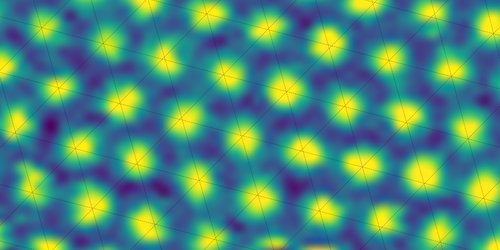Elusive Polar Magnetic Metal Found
Polar metals are metals that are asymmetric under spatial inversion—a simultaneous flip in the sign of all three spatial coordinates. These materials are rare. Polar metals that are also magnetic are even rarer. Now, Hongrui Zhang at the University of California, Berkeley, and his colleagues have identified a material that behaves as a polar magnetic metal at room temperature [1]. This material has intriguing electric and magnetic properties that could make it useful for applications in spin-based electronics.
To make the material, the team started with a layered magnetic crystal made from iron, germanium, and tellurium ( Fe5GeTe2) and gradually replaced its iron (Fe) atoms with cobalt (Co) ones. They found that when the numbers of Fe and Co atoms became equal, the crystal went through a structural transition and developed the properties of a polar magnetic metal.
The researchers observed that at room temperature, this material contained a hexagonal lattice of swirling spin structures known as magnetic skyrmions. It also exhibited a strong bulk Rashba–Edelstein effect—a phenomenon in which a charge current is converted into an accumulation of spins. Both of these features could be useful in the next generation of spin-based electronic technologies. More generally, the team’s work shows that the electric and magnetic characteristics of these types of materials can be finely tuned by adjusting their crystal symmetry through atom substitution.
–Ryan Wilkinson
Ryan Wilkinson is a Corresponding Editor for Physics Magazine based in Durham, UK.
References
- H. Zhang et al., “Room temperature polar magnetic metal,” Phys. Rev. Materials 6, 044403 (2022).




